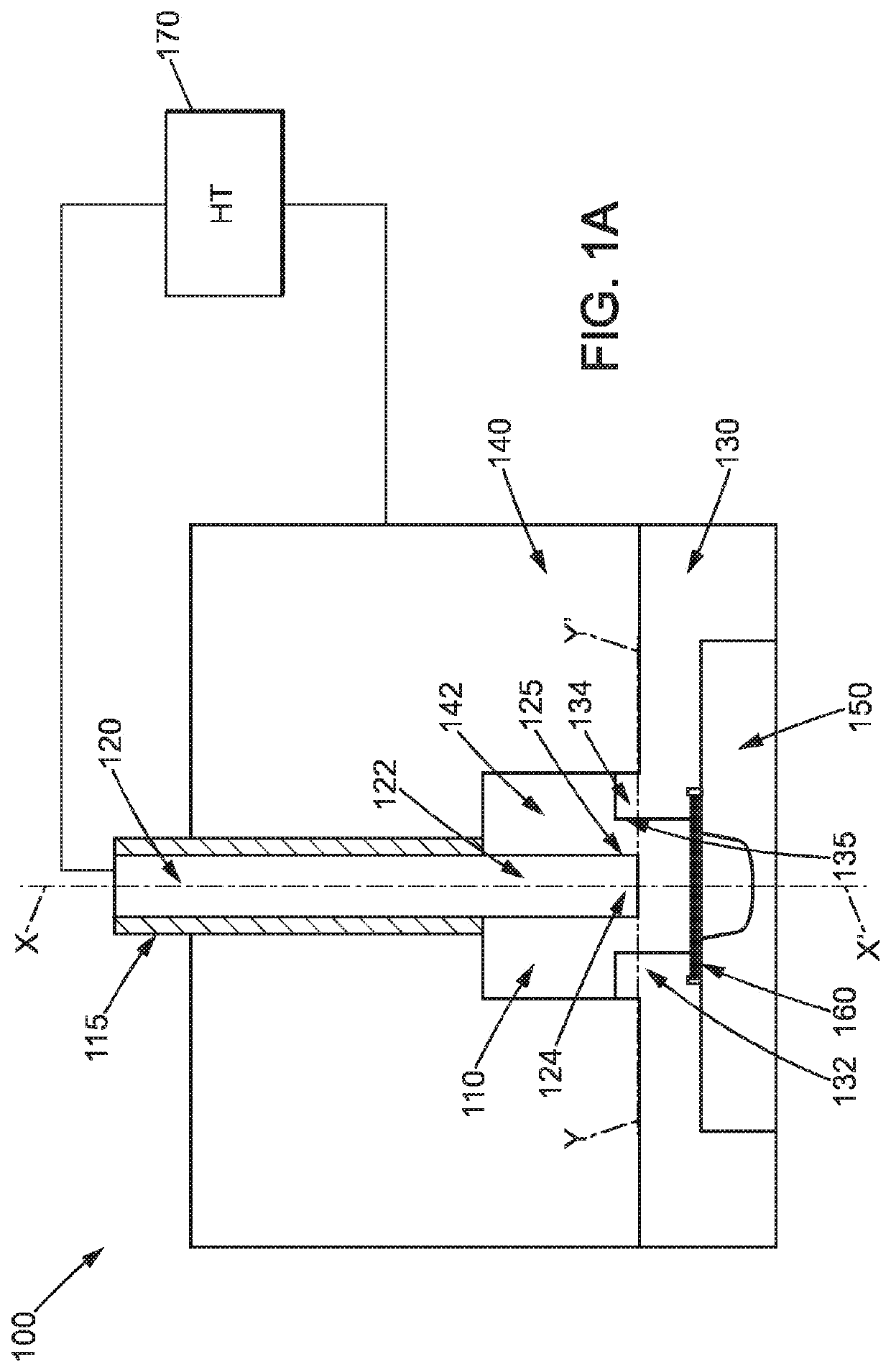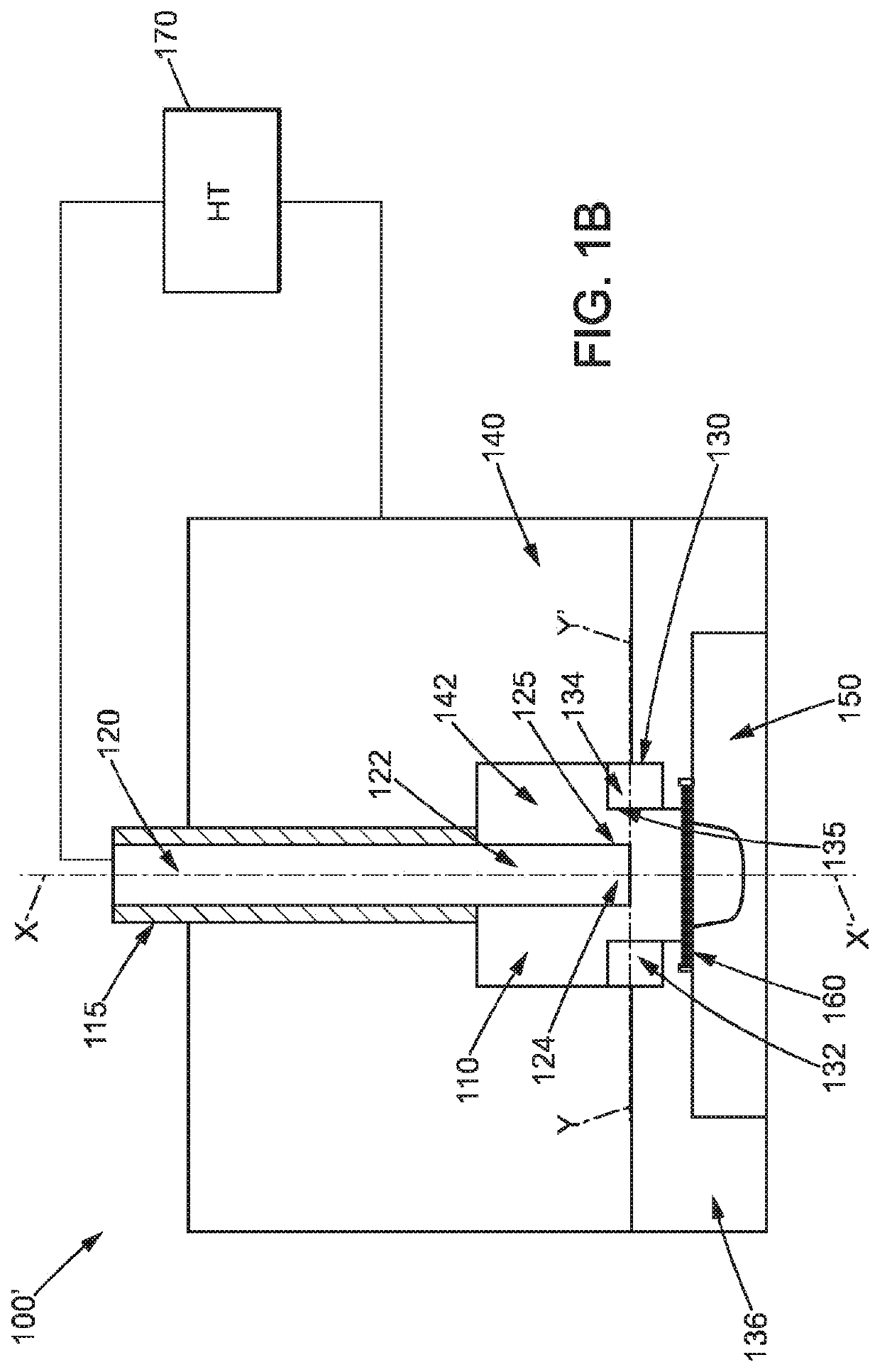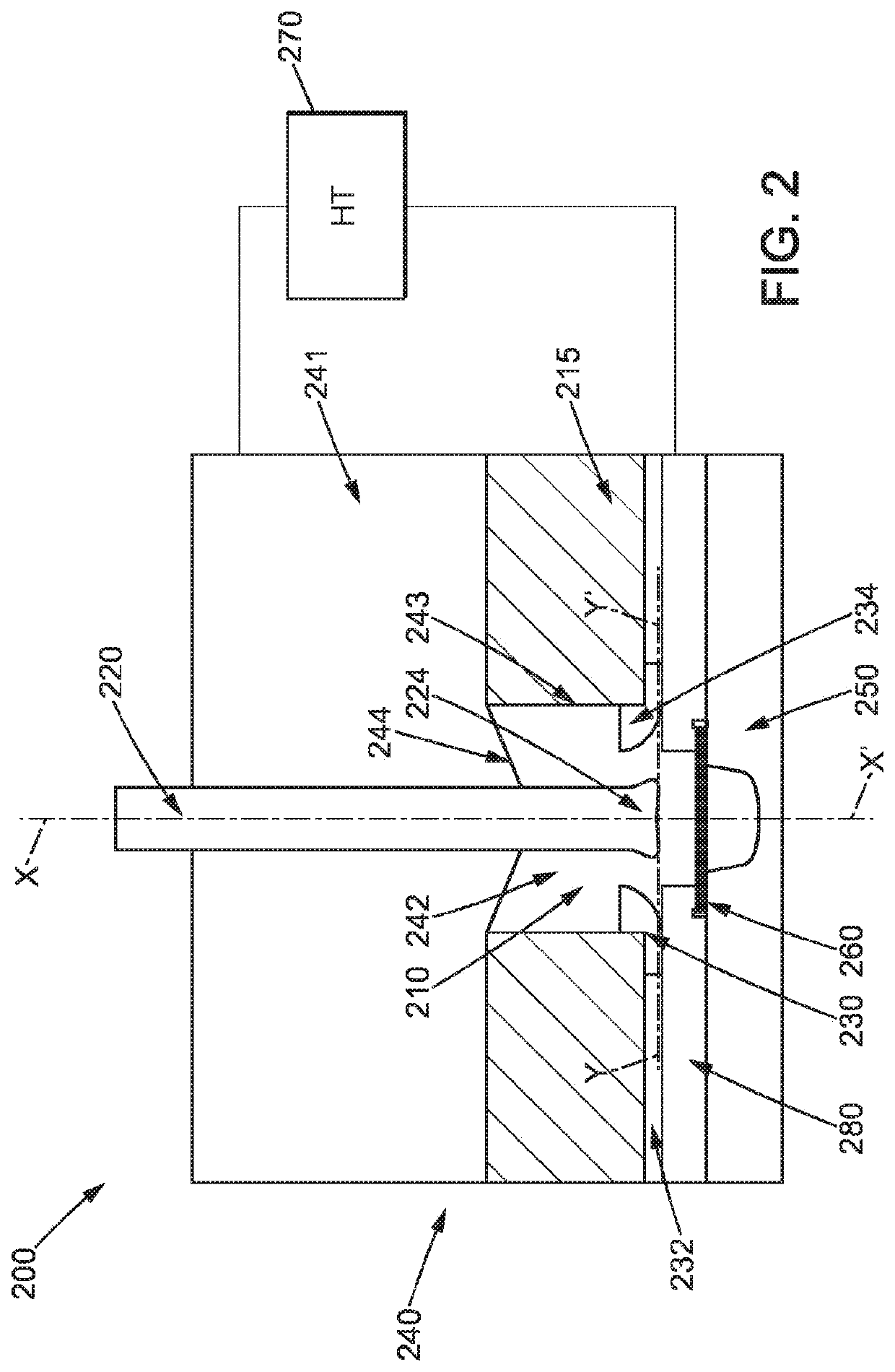Electrohydraulic forming device
a technology of electrohydraulic forming and electrodes, applied in the field of electrohydraulic forming devices, can solve the problems of electrode wear rapid, electrode wear, and increase the distance between electrodes,
- Summary
- Abstract
- Description
- Claims
- Application Information
AI Technical Summary
Benefits of technology
Problems solved by technology
Method used
Image
Examples
first embodiment
[0036]FIG. 1A shows an electrohydraulic forming device according to the invention. The electrohydraulic forming device 100 comprises an electrohydraulic forming chamber 110, a central electrode 120 and a peripheral electrode 130. The central electrode 120 extends in a longitudinal direction XX′ and comprises a first end 122 arranged inside the electrohydraulic forming chamber 110. The peripheral electrode 130 has an end 132 arranged at a distance from and around the end 122 of the central electrode 120. The end 132 of the peripheral electrode 130 extends in a transverse plane relative to said central electrode 120, that is to say in the plane perpendicular to the axis XX′.
[0037]The electrohydraulic forming device 100 also comprises a body 140 and a mould 150. The body 140 comprises an inner cavity 142 and is crossed by the central electrode 120. The inner cavity 142 of the body forms, with the end 132 of the peripheral electrode 130, the electrohydraulic forming chamber 110.
[0038]Th...
second embodiment
[0051]FIG. 2 shows an electrohydraulic forming device according to the invention. The electrohydraulic forming device 200 is similar to same shown with reference to FIG. 1A in that it also comprises an electrohydraulic forming chamber 210, a central electrode 220, a peripheral electrode 230, a body 240 and a mould 250. As opposed to the electrohydraulic forming device shown with reference to FIG. 1A, the electrohydraulic forming device 200 further comprises an additional part 280 serving as a blank holder. The device further comprises an electrode holder 232 on which is attached the peripheral electrode 230. The body 240 further comprises an electrical insulator 215 positioned, no longer between the body and the central electrode as illustrated with reference to FIGS. 1A and 1B, but for example, on the lower portion of the body 240. In the embodiment illustrated here, the electrical insulator 215 constitutes the lateral wall 243 of the cavity 240 partially forming the electrohydraul...
PUM
| Property | Measurement | Unit |
|---|---|---|
| distance | aaaaa | aaaaa |
| electrical insulator | aaaaa | aaaaa |
| electrical | aaaaa | aaaaa |
Abstract
Description
Claims
Application Information
 Login to View More
Login to View More - R&D
- Intellectual Property
- Life Sciences
- Materials
- Tech Scout
- Unparalleled Data Quality
- Higher Quality Content
- 60% Fewer Hallucinations
Browse by: Latest US Patents, China's latest patents, Technical Efficacy Thesaurus, Application Domain, Technology Topic, Popular Technical Reports.
© 2025 PatSnap. All rights reserved.Legal|Privacy policy|Modern Slavery Act Transparency Statement|Sitemap|About US| Contact US: help@patsnap.com



